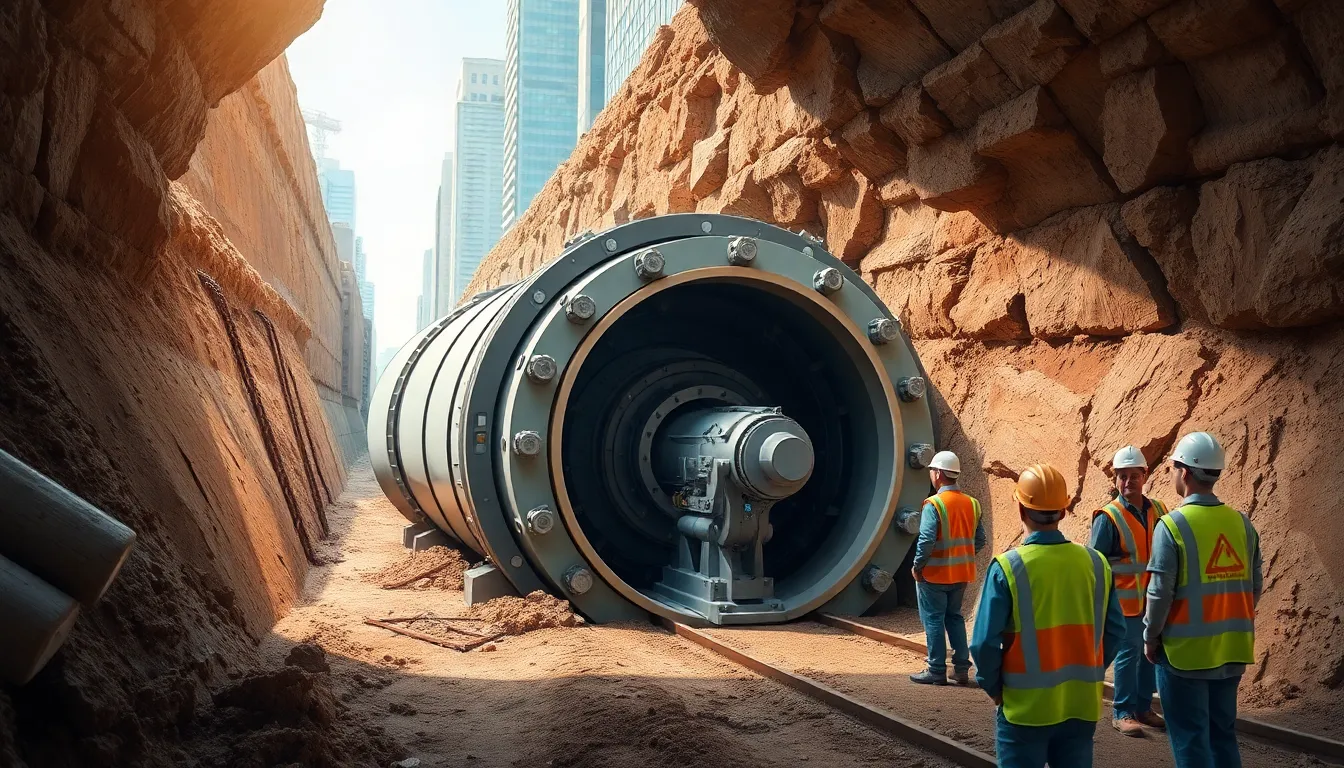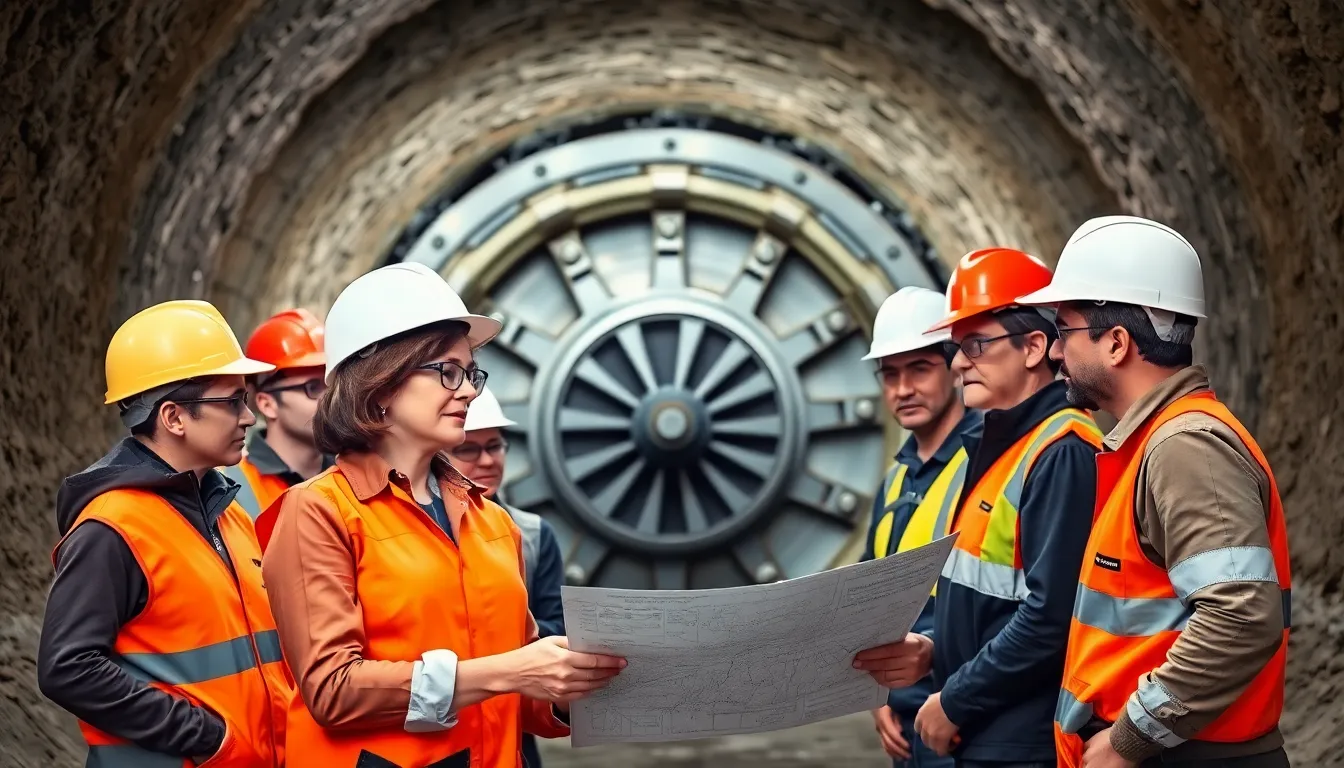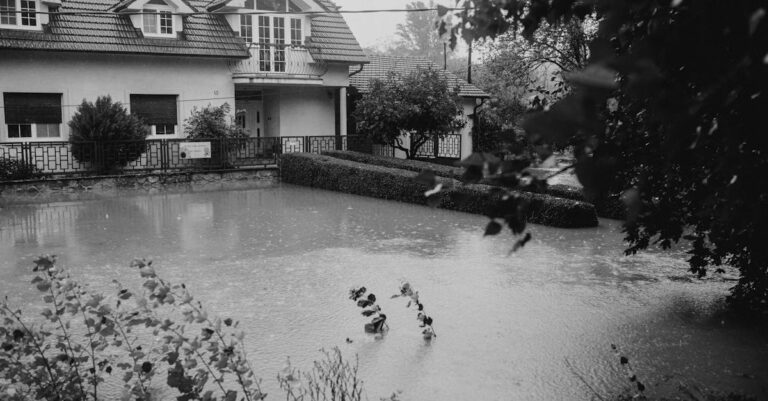In a world where real estate is at a premium, why not dig deeper? Tunnelling and underground space technology offer a treasure trove of possibilities just beneath our feet. From bustling metro systems to sprawling underground shopping malls, these hidden wonders are reshaping urban landscapes and making life a little more exciting—like finding a secret passage in a classic adventure novel.
Table of Contents
ToggleOverview of Tunnelling and Underground Space Technology
Tunnelling and underground space technology play crucial roles in modern urban development. Innovations in this field facilitate the creation of efficient transportation networks and commercial spaces. Ground excavation techniques enable construction projects like metro systems, which serve millions of passengers daily. These technologies also support the development of underground shopping malls, creating vibrant commercial hubs beneath urban landscapes.
The construction process often involves specialized equipment, such as tunnel boring machines (TBMs) that provide precision and efficiency. TBMs reduce environmental disruptions by minimizing surface traffic and noise. Additionally, advancements in materials science lead to stronger, lighter materials, enhancing the durability of underground structures.
Safety remains a priority in tunnelling projects. Implementation of rigorous guidelines helps mitigate risks associated with subsurface work. Training programs for workers encompass safety protocols, excavation techniques, and emergency response strategies. These measures ensure that underground construction maintains high safety standards.
Urban planners recognize the potential of underground space beyond transportation. Spaces created below ground can accommodate energy systems, water reservoirs, and waste management facilities. Such diverse uses optimize land resources and contribute to sustainable urban living.
Investments in research and technology drive ongoing improvements in tunnelling methods. Collaboration among engineers, architects, and city planners fosters innovative solutions to urban challenges. As urban populations increase, the demand for underground infrastructure continues to grow, highlighting the importance of tunnelling and underground space technology in shaping future cities.
Key Techniques in Tunnelling

Tunnelling involves various techniques that adapt to different soil conditions and project requirements. Understanding these techniques helps improve urban infrastructure and build efficient underground systems.
Conventional Tunnelling Methods
Conventional tunnelling methods include drill-and-blast techniques and cut-and-cover approaches. Drill-and-blast uses explosives to break up rock, followed by the removal of debris. This method suits hard rock formations, making it ideal for major projects like highway tunnels. Cut-and-cover involves excavating a trench before constructing the tunnel within it. Ideal for shallow tunnels, this method minimizes disturbance during construction. Additionally, both techniques often require thorough geological assessments to ensure stability and safety.
Modern Tunnelling Techniques
Modern tunnelling techniques focus on enhancing efficiency and safety. Tunnel Boring Machines (TBMs) lead this advancement by allowing precise cutting through various substrates. These machines can operate in mixed ground conditions, significantly reducing environmental impact. Furthermore, New Austrian Tunnelling Method (NATM) employs a combination of rock support techniques to optimize stability. With real-time monitoring systems, modern techniques enhance safety by addressing potential issues during excavation. Innovations like these support advancements in urban development while minimizing disruptions.
Applications of Underground Space Technology
Underground space technology plays a pivotal role in various sectors. This section highlights specific applications, particularly in transportation infrastructure and urban development.
Transportation Infrastructure
Underground space technology significantly enhances transportation systems. Metro systems rely on precise tunneling techniques to navigate dense urban environments. Tunnel boring machines (TBMs) facilitate the construction of efficient rail networks, minimizing surface disruptions. Various cities utilize underground tunnels for pedestrian walkways and cycling paths, supporting sustainable transit options. Additionally, emergency evacuation routes often integrate underground passages, ensuring safety in urban areas. Innovations in tunneling methods continue to optimize these networks, transforming urban mobility.
Urban Development
Urban development benefits tremendously from utilizing underground spaces. Developers create multi-level shopping malls and entertainment venues beneath city streets, maximizing land use. Infrastructure projects often incorporate underpasses to alleviate traffic congestion, improving overall flow. Waste management systems leverage underground facilities to reduce environmental impacts. Furthermore, energy companies utilize subterranean areas for geothermal systems, promoting renewable energy solutions. As urban planners explore these opportunities, underground space technology becomes integral to sustainable city growth.
Challenges in Tunnelling Projects
Tunnelling projects face various challenges that significantly impact their feasibility and success.
Geological and Environmental Considerations
Geological conditions dictate the feasibility of tunnelling endeavors. Rock types, soil conditions, and groundwater levels must be evaluated before construction. Variability in geology can affect tunnelling techniques, equipment choice, and construction timelines. Environmental impact assessments play a critical role in planning; they ensure projects comply with regulations and address potential disturbances. Mitigating environmental disruption during excavation is essential. Projects often integrate measures to control sediment runoff and protect nearby ecosystems. These considerations are vital for achieving environmentally sustainable outcomes.
Safety and Risk Management
Safety remains a top priority in tunnelling projects. Comprehensive risk assessments identify potential hazards like cave-ins and equipment failures. Workers must undergo rigorous training to adhere to safety protocols. Implementing contingency plans can minimize risks in the event of unforeseen incidents. Regular safety drills and monitoring systems further improve safety measures. Establishing clear communication between team members enhances overall safety awareness. Using protective equipment, such as hard hats and safety boots, is standard in underground workspaces. Such practices ensure the well-being of all personnel involved in tunnelling projects.
Advances in Tunnelling Technology
Innovations in tunnelling technology drive efficiency and sustainability in urban development. Tunnel boring machines (TBMs) exemplify these advancements by enabling precise excavation and reducing environmental impact. Different TBM types cater to a variety of geological conditions, enhancing performance across diverse projects.
Advanced techniques such as the New Austrian Tunneling Method (NATM) prioritize stability and adapt to surrounding geology, which minimizes risk during construction. Real-time monitoring systems combine cutting-edge technology with traditional methods, allowing project managers to track conditions and respond promptly. Predictive analytics provide insights into potential challenges, improving decision-making processes.
Techniques like ground-freezing and chemical grouting offer solutions for challenging soil conditions, ensuring tunnelling projects meet safety and performance standards. Integrated design approaches allow multidisciplinary teams to collaborate effectively, optimizing project execution. Virtual reality and simulation technologies create accurate models, aiding in design planning and stakeholder communication.
Investments in research continue to spur advancements in materials, leading to stronger and more durable tunnel linings. Innovations ensure longevity and reduce maintenance costs, providing lasting benefits to infrastructure. Smart construction methods utilize automation to enhance consistency, allowing crews to focus on complex tasks that require human judgment.
Hydroshield technologies protect underground habitats and surface environments from water ingress, thus addressing public concerns regarding tunnelling impacts. Sustainable tunnelling practices also play a role in reducing carbon footprints, focusing on energy-efficient methods throughout the project lifecycle. Overall, the integration of these advanced technologies propels the tunnelling sector toward a more sustainable and efficient future.
Future Trends in Underground Space Exploration
Emerging trends in underground space exploration highlight the increasing use of automation and AI. These technologies enhance precision in tunneling operations, making processes safer and more efficient. Companies are adopting robotic systems to handle tasks traditionally performed by humans, minimizing labor costs and risks.
Sustainability gains traction as a critical focus in future projects. Eco-friendly materials and methods are gaining popularity to reduce environmental impact during construction. Developers are prioritizing designs that improve energy efficiency, particularly in underground structures that manage heating and cooling effectively.
Advances in real-time monitoring systems lead to improved safety measures. These systems allow for constant assessment of geological conditions, enabling quick responses to any potential hazards. With enhanced data analytics, teams can predict potential issues, leading to more informed decision-making.
Collaboration among multidisciplinary teams fosters innovation in tunneling projects. Engaging various experts ensures that projects benefit from diverse perspectives, enhancing overall design and functionality. As urban planners recognize the value of integrating public spaces within underground venues, more multi-use facilities emerge beneath city streets.
Investment in research occupies a key role in advancing tunneling technologies. New materials designed for durability and sustainability support the shift toward greener construction practices. Companies are exploring methods that increase soil stability while minimizing disruptive impacts on existing infrastructure.
The role of public-private partnerships grows, facilitating funding and resource sharing for ambitious underground projects. These collaborations drive urban development efforts, emphasizing the significance of efficient transportation networks. Continued exploration of underground space technology signifies a future driven by innovation, sustainability, and community engagement.
Tunneling and underground space technology are reshaping urban landscapes and addressing the challenges of growing populations. By unlocking the potential of subterranean spaces, cities can enhance transportation systems and create multifunctional environments that promote sustainability.
Advancements in tunneling methods and technologies ensure that projects are executed with precision while minimizing environmental impact. As urban planners and developers continue to explore innovative solutions, the future of underground space technology looks promising.
The integration of automation and smart design will not only improve efficiency but also foster safer and more sustainable urban living. Embracing these developments is essential for building resilient cities that thrive in a rapidly changing world.




